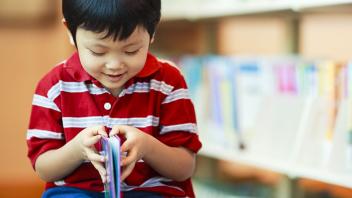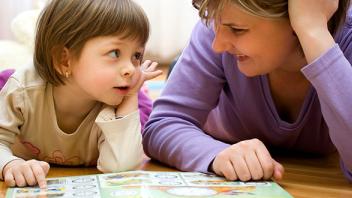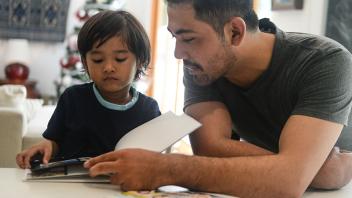Print awareness is a child’s earliest introduction to literacy
Children with print awareness understand that print has different functions depending on the context in which it appears — menus list food choices, a book tells a story, a sign can announce a favorite restaurant or warn of danger.
Print awareness is understanding that print is organized in a particular way — knowing that print is read from left to right and top to bottom. It is knowing that words consist of letters and that spaces appear between words.
Most children become aware of print long before they enter school. They see print all around them, on signs and billboards, in alphabet books and story books, and in labels, magazines, and newspapers. Seeing print and observing adults’ reactions to print helps children recognize its various forms.
The ability to understand how print works does not emerge magically and unaided. This understanding comes about through the active intervention of adults and other children who point out letters, words, and other features of the print that surrounds children.
When children are read to regularly, when they play with letters and engage in word games, and later, when they receive formal reading instruction, they begin to understand how the system of print functions; that is, print on a page is read from left to right and from top to bottom; that sentences start with capital letters and end with periods, and much, much more.
As they participate in interactive reading with adults, children also learn about the features of a book — such as author and illustrator names, book title, and page numbers. They also learn about book handling — including how to turn pages, how to find the top and bottom of a page, how to identify the front and back cover of a book.
As part of this learning, they begin to develop the very important concept of a “word” — that meaning is conveyed through words; that printed words are separated by spaces; and that some words in print look longer (because they have more letters) than other words.
More on print awareness
Launching Young Readers
Roots of Reading
Reading 101 Learning Modules
Print Awareness: Introduction
Curriculum and Instruction
Print Awareness: Guidelines for Instruction
Reading 101: A Guide for Parents
Reading 101 for Parents: Print Awareness
Featured video
Browse our print awareness library
Learn more about the role of print awareness in early literacy through our articles, tips for parents, video, FAQs, and research briefs. Visit our Print Awareness section




